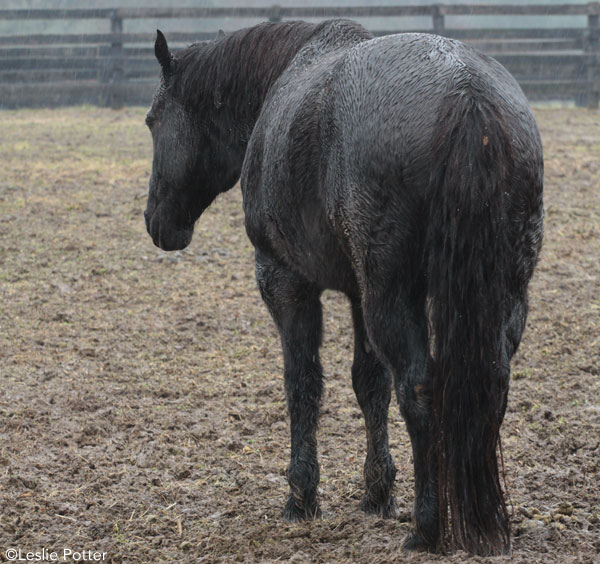 If it rains where you live, you probably have experienced muddy conditions at your barn. Obviously, squishing through deep mud in your muck boots is no fun, but did you know that mud could cause problems for your favorite horse? Let’s take a look at mud and how it affects the horses at your barn.
If it rains where you live, you probably have experienced muddy conditions at your barn. Obviously, squishing through deep mud in your muck boots is no fun, but did you know that mud could cause problems for your favorite horse? Let’s take a look at mud and how it affects the horses at your barn.
Mud fever
If your horse gets mud fever, you must do your best to keep his legs dry for a while so they can heal. Hose off the mud and treat the area with an anti-bacterial shampoo or iodine-based scrub. Then dry the area with a clean towel. Most importantly, your horse must spend some time inside a stable or in a dry pen until the sores heal.

Poor riding surface
Riding in deep, sticky mud isn’t a great idea and you should try to avoid it. Deep mud can twist delicate equine legs and possibly damage leg tendons and ligaments. Rain can turn even the best arena into a muddy swamp. If your barn’s arena gets really deep and sticky when it rains, give your horse the day off. If you must ride, stick to slower speeds so you don’t strain your horse’s legs.
A horse is more likely to overreach (strike his front heel with his hind hoof) when being ridden in mud, so put rubber overreach boots on him if you really must ride him in bad conditions. Overreach or bell boots will also help to keep his shoes on.
Eventers, people who jump their horses over cross-country fences, often use studs (caulks) on muddy days. These are small pointy pieces of metal that screw into specially drilled holes in a horse’s shoe. They help the horse’s shoes grip the ground so he can stay balanced when jumping and so he doesn’t slip around so much on the mud. It takes some practice to screw in studs, so don’t try them for the first time at a show.
Pulled shoes
Deep, sticky mud can pull off horseshoes, even if they’ve been put on properly. Mud just seems to suck off the shoes. If it gets really muddy in the winter in your area, you might consider pulling your horses shoes for the winter. If you don’t ride him and he has fairly good feet, you probably don’t need them.
If you want to keep the shoes on, ask your farrier to put toe clips on them. Toe clips are two triangular shaped clips that help to keep the shoes in place.
If you notice that your horse has lost a shoe, it’s a good idea to go look for it out in the field. You don’t want your horse or one of his pasture pals to step on it and have a nail puncture his hoof. Plus you can save some money because your farrier will probably be able to use the same shoe, rather than put a new one (which will cost you extra money) on him.
Caring for muddy legs
If you’ve ridden in muddy conditions, it’s essential that you hose off your horse’s legs and dry them with a clean towel.
If it’s really cold and you don’t want to hose him, put him in a stall for a while until the mud on his legs dries and you can brush it off with a dandy brush.
Always pick out your horse’s hooves after riding in mud. Sharp rocks can get stuck in muddy hooves, and rocks can cause stone bruises and abscesses.
Muddy fields and pens
You probably can’t do much about the mud in your barn’s fields, that’s the owner’s responsibility. But if your horse lives in a small pen, you should shovel out wet patches and replace them with dry bedding. There are lots of absorbent beddings around. Look for them at your local feed or tack shop.
This article originally appeared in the November/December 2004 issue of Young Rider magazine. Click here to subscribe!




